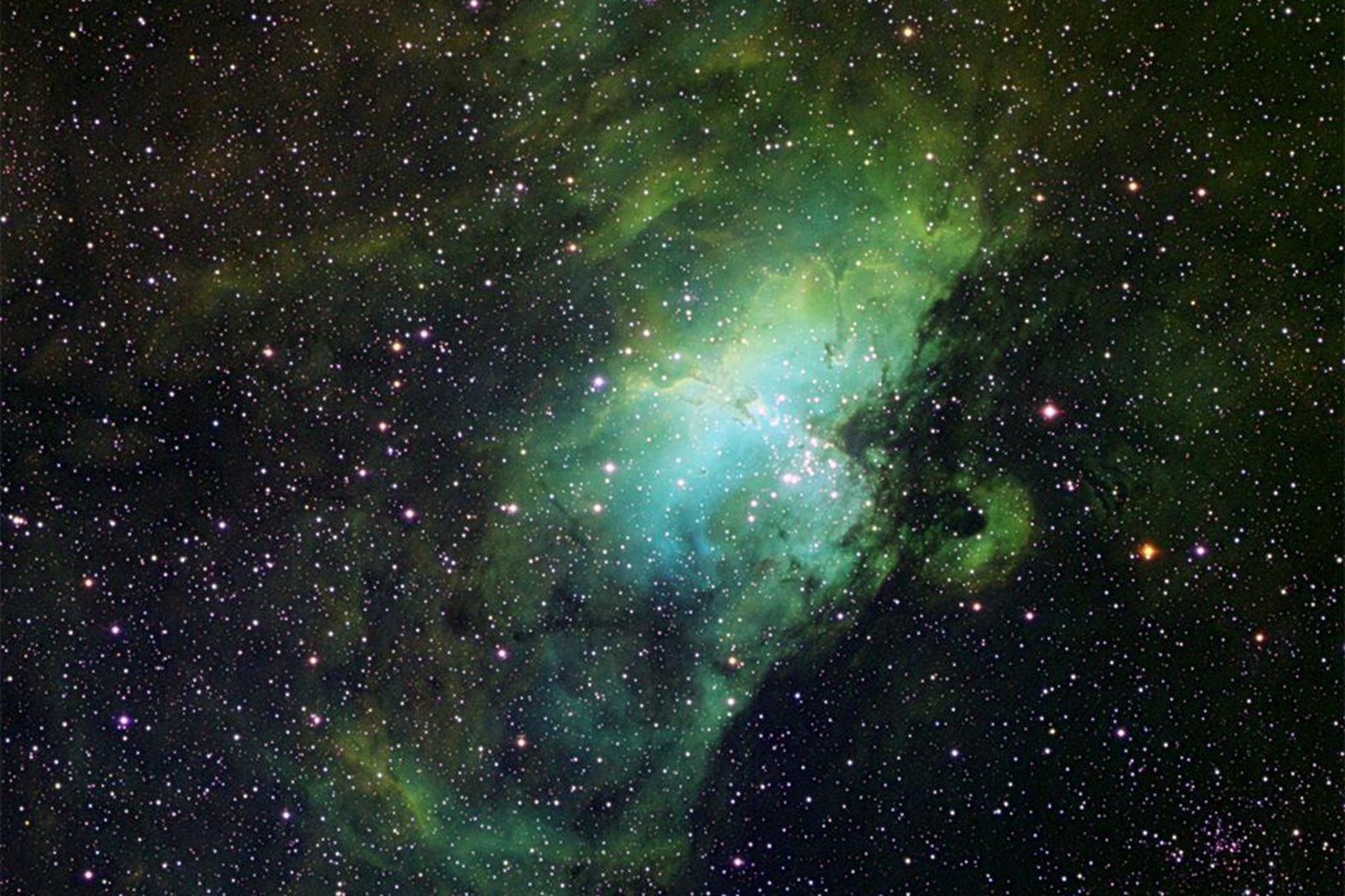/
The search for alien life is fundamentally a data sorting challenge. A new paper suggests machine learning could be a possible solution.
:format(webp)/cdn.vox-cdn.com/uploads/chorus_asset/file/24091189/hubble_palate_.jpeg)
The field of SETI, or the search for extraterrestrial intelligence, is accelerating to new heights thanks to developments in machine learning.
In a paper published last week in Nature Astronomy, a team of researchers led by Peter Ma of the University of Toronto shared a machine learning method for digging through data from the Breakthrough Listen project to identify signals that could be potential technosignatures — that is, indications of technological complexity that suggest an intelligent alien civilization.
“I think it’s a very important question to be asking, as humanity: is there anyone else out there?” Ma told The Verge.
As humanity becomes more and more adept at observing the universe and learning about its history, the question of whether we are alone has never been more pointed. If there is life out there beyond Earth, how could we find it? Why haven’t we been contacted yet? And what would it take to make a connection with an alien civilization?
Ma’s research focuses on a particular part of the electromagnetic spectrum called narrow-band radio. While all sorts of objects in the universe give off radiation at a broad range of frequencies, radio frequencies are particularly efficient for sending signals. And when we, as humans, communicate using radio waves, we use a narrow band because that’s more efficient.
SETI researchers assume that alien civilizations, if they are out there, would do the same. “From a technology perspective, it makes sense for any intelligent civilization, who are also trying to transmit through electromagnetic radiation like through radio, to be transmitting at narrow bands,” Ma explained.
There’s a particular section of the radio band, at around the 1420MHz range, that SETI researchers are interested in. Known as the hydrogen line, this is important to astronomers because it’s the frequency at which neutral hydrogen gives off radiation, so it’s key to studying all sorts of astronomical targets.
Researchers believe that any alien civilization interested in the stars would likely be looking at this band, too, making it what is referred to as a “galactic watering hole.” If a civilization were trying to communicate across the cosmos, it’s the best idea we’ve got for the frequency they’d use to do so.
This approach has been the basis for much SETI research in previous years: combing through data to look for signals in this band often using an algorithm called turboSETI. That algorithm searches through plots of time by frequency and looks for straight lines, which indicate a signal’s presence. It’s an efficient way to search through reams of data, but it has problems, too — not least of which is filtering out false positive results caused by interference from Earth.
The new method takes a different approach. Instead of searching for these straight lines, the researchers fed in original observations and then simulated the kind of signals they are interested in and trained their algorithm to recognize these signals.
This allows a more flexible approach to signal recognition, picking up anomalies in the narrow band that flick on and off, even if they don’t have the simple line shape that the traditional algorithm would flag. It’s a more generalized approach, allowing for the possibility of signal types that might not be predicted by Earth-based engineers.
It makes the approach faster and more efficient as well. “What people have originally done is they’ve taken classical algorithms and appended a machine learning approach somewhere in the pipeline,” Ma said. Now, with developments in the machine learning field, the entire pipeline can be machine learning based.
This is important, as SETI is essentially a numbers game: the challenge is to get enough data from enough telescopes to increase the chances of making a detection. Combing through all of that data to find the needle in the cosmic haystack requires increasingly efficient methods.
The wider field of SETI is an unusual enterprise in that researchers can dedicate their entire careers to searching for something that may or may not be out there. New tools like powerful telescope arrays and machine learning techniques can help to make the search more accurate and precise. “There has never been a better time in history for us to be doing SETI,” Ma said. But even if life does exist beyond our planet, we may never have the chance to discover it.
On the other hand, there’s the tantalizing possibility that humanity could detect an intriguing signal tomorrow or even that evidence of an alien civilization could already exist in the reams of data that have been collected from decades of listening to the skies.
That prospect of having their curiosity sated keeps SETI researchers engaged in their long hunt. “Who knows. There might be a groundbreaking signal sitting on some hard drive in a basement right now,” Ma said. “Someone’s got to look, right?”
